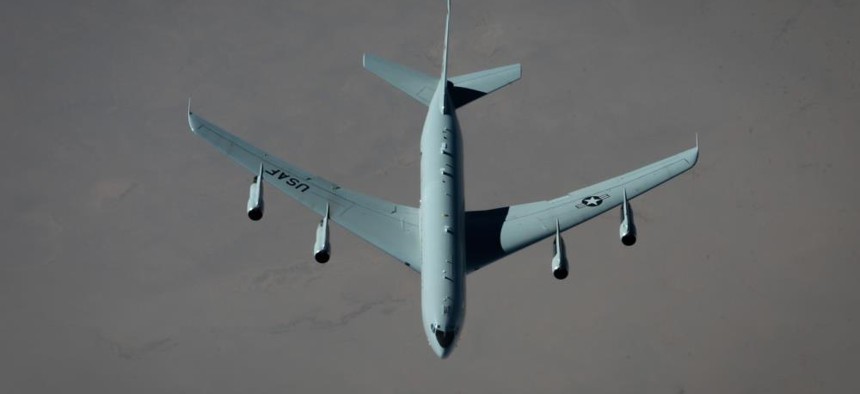Joint STARS gets communications upgrade
Northrop Grumman will upgrade the Joint STARS surveillance plane's tactical radios.
The Air Force will upgrade tactical radios on its fleet of surveillance radar aircraft to securely deliver situational awareness and other threat data.
Northrop Grumman announced Aug. 8 it would upgrade current terminals on the E-8C Joint Surveillance Target Attack Radar Systems. The contract calls for installation of the Air Force Tactical Receive System-Ruggedized terminals on the 17-plane Joint STARS fleet to improve delivery of intelligence reports, including threat warnings.
The terminals handle data feeds from electronic intelligence sensors, allowing the surveillance aircraft to track mobile threats ranging from enemy air defenses to theater ballistic missiles. AFTRS-R replaces the current receive-only terminal while providing a new data encryption capability.
The Air Force said the upgrade also addresses a shrinking manufacturing base for the current Joint STARS terminal.
"Our mission is to ensure our combat commanders have the highest degree of situational awareness in the battle space," said Col. Raymond Wier, program manager for C2ISR and battle management at the Air Force Life Cycle Management Center, in a statement announcing the Joint STARS radio upgrade.
AFTRS-R is a separate procurement under an Air Force contract to equip Joint STARS awarded to Northrop Grumman in October 2013. The wide-area surveillance aircraft is billed as the only long-range battle management and command and control weapon system in the world.
The new terminals are designed to receive intelligence data via UHF satellite communications broadcast channels. The intelligence data provided by the Integrated Broadcast Service has a Type-1 cryptographic certification from the National Security Agency for handling classified data.
Northrop said the terminal upgrade would support future IBS requirements for Joint STARS. Combat computing specialists Leonardo DRS builds manufacturers the IBS terminal.
Northrop has served as prime Air Force contractor for Joint STARS, a modified Boeing 707-300, since the airborne surveillance program's inception in the early 1990s. Battlefield surveillance data is relayed in near-real time to the Army and Marine Corps common ground stations and to other ground C4I nodes.




